Start learning 50% faster. Sign in now
We have, C sits second to the left of the one who likes Blue colour. Two persons sit between C and H. From the above condition, there are two possibilities. 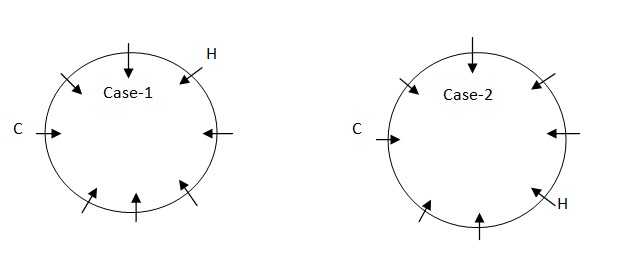 Again we have, B sits second to the left of D. From the above condition and note, there are four possibilities.
Again we have, B sits second to the left of D. From the above condition and note, there are four possibilities. 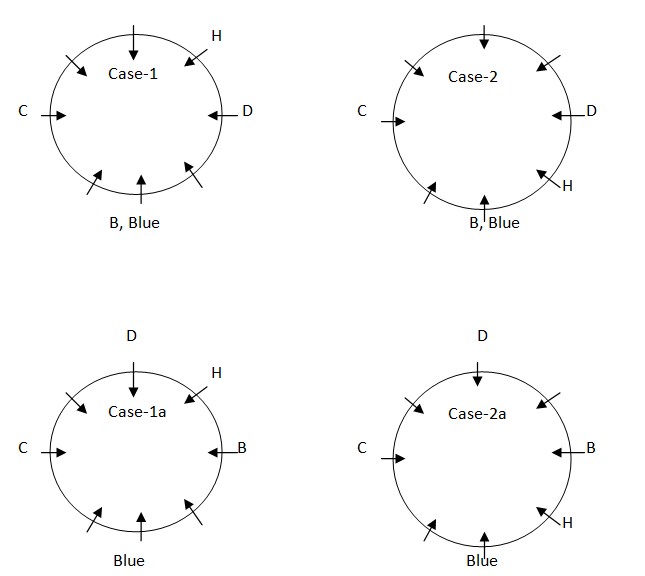 Again we have, G sits immediate left of the one who likes Black. Neither C nor D like Black. G and D are not immediate neighbors. G does not sit opposite to D. From the above condition, Case1 and case2a get eliminated because there is no possibility to place G.
Again we have, G sits immediate left of the one who likes Black. Neither C nor D like Black. G and D are not immediate neighbors. G does not sit opposite to D. From the above condition, Case1 and case2a get eliminated because there is no possibility to place G. 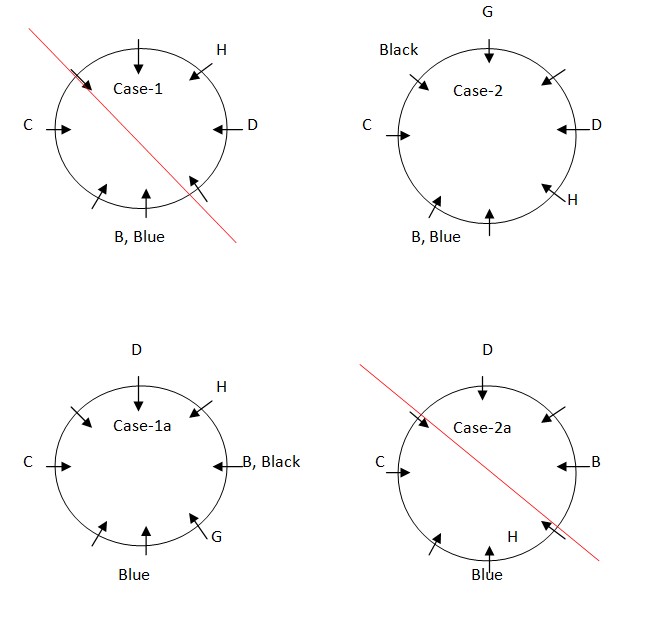 Again we have, The number of persons sit between E and A is the same as the number of persons sit between F and the one who likes Brown, when counted from the right of both A and F F sits opposite to the one who likes Orange. Neither G nor H like Orange. From the above condition and note, case1a gets eliminated because there is no possibility to place F.
Again we have, The number of persons sit between E and A is the same as the number of persons sit between F and the one who likes Brown, when counted from the right of both A and F F sits opposite to the one who likes Orange. Neither G nor H like Orange. From the above condition and note, case1a gets eliminated because there is no possibility to place F. 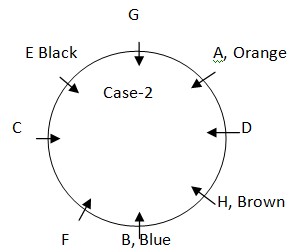 Againwe have, TheonewholikesWhitesitssecondto the right of the one who likes Red. DdoesnotlikeRed. FdoesnotlikeYellowcolour. Fromtheabovecondition,case2showsthefinalarrangement.
Againwe have, TheonewholikesWhitesitssecondto the right of the one who likes Red. DdoesnotlikeRed. FdoesnotlikeYellowcolour. Fromtheabovecondition,case2showsthefinalarrangement. 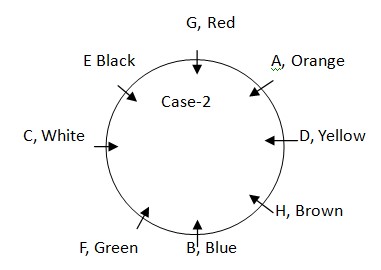
The first stable compound formed in the photosynthesis of C3 plants is :
Agranal chloroplasts are found in _____
National Panchayati Raj day is observed annually on _____
Which measure involves cultivating erosion resisting and permitting crops in strips across the slope to break long slopes and prevent soil loss?
According to Planning commission, Indian region is divided into how many agro climatic zones?
In animal breeding, what is the term for those who have a common ancestor, but are not as closely related as in close inbreeding?
Father of Plant Pathology in India is known as:
Central Institute of Arid Horticulture was located at
What is the name of the process that uses control temperatures and humidity to extend the storage life of fruits and vegetables while minimizing Decay a...
In the context of wind erosion, which phase involves particles bouncing along the ground surface?